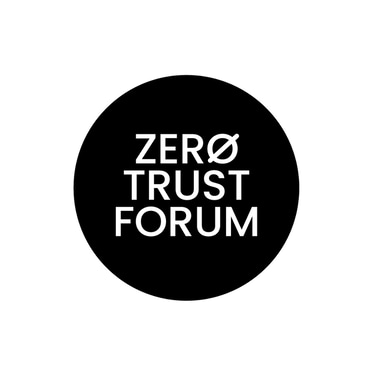The Five Pillars of Zero Trust: A Comprehensive Guide
Zero Trust, a security model that has gained significant traction in recent years, challenges the traditional perimeter-based security approach. It assumes that no user, device, or application can be inherently trusted, regardless of its location. Instead, it mandates strict verification and continuous authorization for every access request. The Cloud Security Alliance (CSA) has identified five core pillars that underpin Zero Trust. These pillars provide a robust framework for organizations to implement a Zero Trust strategy, ensuring the security of their digital assets.
Jaye Tillson
11/4/20243 min read
Zero Trust, a security model that has gained significant traction in recent years, challenges the traditional perimeter-based security approach. It assumes that no user, device, or application can be inherently trusted, regardless of its location. Instead, it mandates strict verification and continuous authorization for every access request.
The Cloud Security Alliance (CSA) has identified five core pillars that underpin Zero Trust. These pillars provide a robust framework for organizations to implement a Zero Trust strategy, ensuring the security of their digital assets.
Pillar 1: Identity
The foundation of Zero Trust is strong identity verification. Organizations must establish a robust identity and access management (IAM) system to identify and authorize users, devices, and applications accurately. Key considerations for this pillar include:
Strong Authentication: Implement multi-factor authentication (MFA) to add an extra layer of security. This can involve the use of biometrics, time-based one-time passwords (TOTP), or hardware tokens.
Continuous Authentication: Regularly re-authenticate users, even after initial login, to ensure ongoing authorization. This can be achieved through techniques like risk-based authentication, which adapts authentication requirements based on factors such as device health, location, and user behavior.
Least Privilege Access: Grant users only the minimum level of access required to perform their job functions. This principle helps to limit the potential damage caused by unauthorized access or insider threats.
Identity and Access Governance (IAG): Implement IAG processes to manage user identities, access rights, and privileges throughout their lifecycle. This includes provisioning, de-provisioning, and role-based access control (RBAC).
Pillar 2: Device
The security of devices accessing the network is critical in a Zero Trust environment. Organizations must ensure that devices are secure, compliant, and up-to-date. Key considerations for this pillar include:
Device Posture Assessment: Continuously assess the security posture of devices, including operating system patches, antivirus software, and firewall configurations.
Endpoint Detection and Response (EDR): Deploy EDR solutions to detect and respond to threats on endpoints, such as malware, ransomware, and zero-day attacks.
Mobile Device Management (MDM): Enforce security policies on mobile devices, including encryption, remote wipe, and password complexity requirements.
Secure Remote Access: Implement secure remote access solutions, such as virtual private networks (VPNs) or zero-trust network access (ZTNA) solutions, to protect remote workers.
Pillar 3: Network and Environment
The network infrastructure itself is a critical component of Zero Trust. Organizations must segment their networks, implement micro-segmentation, and utilize network access controls to limit lateral movement of threats. Key considerations for this pillar include:
Network Segmentation: Divide the network into smaller, isolated segments to limit the impact of a security breach. This can be achieved through network segmentation, software-defined networking (SDN), or network virtualization.
Micro-Segmentation: Further segment the network at the application and workload level to isolate critical assets and prevent unauthorized access.
Network Access Controls: Implement strict network access controls, such as firewall rules, intrusion detection systems (IDS), and intrusion prevention systems (IPS), to monitor and control network traffic.
Zero-Trust Network Access (ZTNA): Utilize ZTNA solutions to provide secure access to applications and resources based on user identity, device posture, and application context.
Pillar 4: Applications and Workloads
Applications and workloads are essential components of modern IT environments. Organizations must protect these assets by implementing application security controls and workload isolation. Key considerations for this pillar include:
Application Whitelisting: Restrict the execution of applications to a predefined list of trusted software.
Secure Coding Practices: Enforce secure coding practices to minimize vulnerabilities in custom applications.
Web Application Firewalls (WAFs): Deploy WAFs to protect web applications from attacks such as SQL injection, cross-site scripting (XSS), and cross-site request forgery (CSRF).
Workload Isolation: Isolate workloads from each other to limit the potential impact of a breach. This can be achieved through containerization, virtualization, or cloud-native technologies.
Pillar 5: Data
Data is the lifeblood of organizations. Protecting sensitive data is paramount in a Zero Trust environment. Key considerations for this pillar include:
Data Classification: Classify data based on its sensitivity and value to the organization.
Data Encryption: Encrypt data both at rest and in transit to protect it from unauthorized access.
Data Loss Prevention (DLP): Implement DLP solutions to prevent the accidental or malicious loss of sensitive data.
Data Access Controls: Enforce strict access controls to limit who can access and modify sensitive data.
Implementing a Zero Trust Strategy: Where to Start
Implementing a Zero Trust strategy can be a complex and iterative process. To get started, consider the following steps:
Assess Your Current Security Posture: Conduct a thorough assessment of your existing security controls and identify gaps.
Define Your Zero Trust Goals: Clearly define your organization's Zero Trust goals and objectives.
Prioritize Initiatives: Prioritize Zero Trust initiatives based on risk and business impact.
Pilot Projects: Implement pilot projects to test and validate Zero Trust concepts.
Continuous Improvement: Regularly review and refine your Zero Trust strategy to adapt to evolving threats and technologies.
By following these steps and adhering to the five pillars of Zero Trust, organizations can significantly enhance their security posture and protect their valuable assets. Remember, Zero Trust is a journey, not a destination. Continuous evaluation and improvement are essential to maintain a strong security posture in today's threat landscape.


